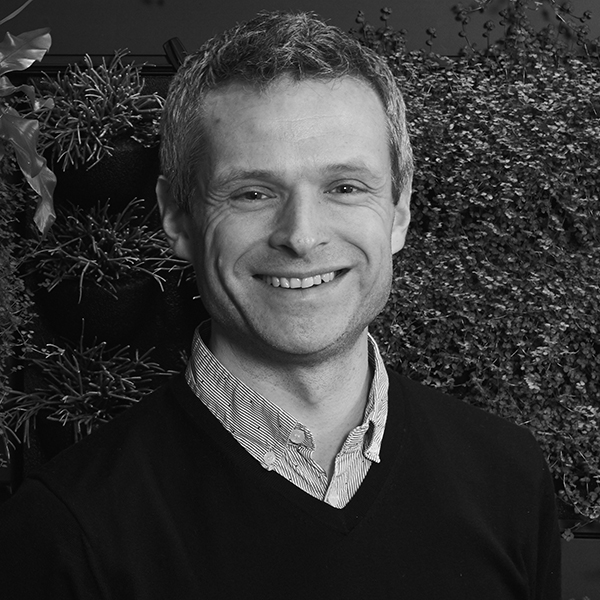
A number of leading architectural practices have told Project Scotland their views on what can be done to rejuvenate our town and city centres to ensure a vibrant future.
This follows an announcement by Glasgow City Council that a task force is undertaking a review of three of the city’s most iconic streets – Argyle, Buchanan and Sauchiehall Streets – in the face of changing retail trends and an increase in vacant units and sites, which the local authority said indicated the need to move to a mixed-use model.
The challenges facing Glasgow are being replicated across the country.
Mike Harrison, creative director and co-founder of HarrisonStevens, said the future of towns and high streets has long been an area of concern, and while the pandemic has exacerbated this, it has also increased our appreciation of outdoor spaces and how we use them.
“Town planners and local authorities need to embrace the opportunity to think flexibly about spaces and be more open to changes in use,” he said. “There needs to be a shift in approach to removing the barriers to redeveloping difficult and vacant sites in our high streets to improve the appeal and vibrancy of our town centres. They need to ask communities living in and around centres about what they want from the spaces around them. Too many of our high streets look the same as others yet the context of each town is so unique and special.”

Mike wants to see the adoption of a ‘localism agenda’, where place and context become important, helping to make high streets more unique and contextual.
“People make a place and provide a town’s unique qualities, so we need to look at how we can encourage more footfall, dwell time and people interactions into our high streets,” he added. “People bring life and sustain the economy and businesses in our towns and cities. Bringing work and living spaces together on the high street can help to achieve this by creating a variety of uses of spaces for leisure, health and wellbeing.
“The Scottish Government’s 20-mins neighbourhoods policy sets out how we need to meet living needs – work, exercise, shops, libraries, public services, education, and housing – all within a 20-min active travel radius. Edinburgh as a city made of small villages is perfect for this as places like Stockbridge, Newington and Bruntsfield already have vibrant sustainable centres within a local radius. Reimagining how we use spaces in our towns and city centres can also help to improve the environment and reduce our impact on the planet.”
Mike highlighted Stockton-on-Tees as a good example, where Castlegate Shopping Centre is to be demolished and replaced by a five-acre riverside park.
“Planting more trees in urban environments helps to cool temperatures, clean air, and capture carbon,” he said. “The environment needs to be considered carefully and in detail to ensure that the best possible attractive social spaces are created, such as seating in sunny spots and shade and shelter where desirable, and the removal of vehicles to encourage more people to spend quality time on the high street.”
Tim Gray, director of Holmes Miller Architects and past president of the Glasgow institute of Architects, said bricks and mortar stores have faced challenging conditions on British high streets for some time. He agrees the pandemic has accelerated these issues and moved the conversation higher-up the agenda.
“Despite the Scottish Government’s change in guidance meaning workers can return to offices after nearly two years, people’s workplace expectations have fundamentally shifted,” he explained. “With around 60% of the UK’s adult population working from home during the first lockdown, people are no longer interested in long commutes into city centres and are increasingly demanding hybrid working to improve their work/life balance. Whilst this is understandable, it does ring alarms bells for businesses across the country dependent on footfall to survive.

“Our work with various councils across the UK on reimagining and regenerating community spaces means we’ve examined a number of design-led changes that could transform Glasgow’s high streets from a commerce-led, mono-use setting into a vibrant, sustainable city centre with increased diverse facilities, social interaction and community spirit.
“One big opportunity is instead of focusing on a retail mono-culture, Glasgow could instead create a variety of spaces, in, along and above the high street to animate the urban environment at different times and with different uses. This could involve repurposing existing buildings into flexible learning and work spaces, creating temporary uses for vacant spaces such as incubator units or pop-up cultural and artistic activities, or building enhanced community facilities, for example. These will all become important draws to encourage people to stay longer in the town, increasing economic opportunities when they do so.
“Ultimately, we must kick our addiction to retail and acknowledge that the high street is an important part of the local community, helping new and emerging industries to flourish whilst adding to the local vibrancy of the area.”
Tim described architects as having a ‘key role’ to play in intelligently redesigning the high street for the modern era. Reflecting on the Glasgow situation, he said whatever plans the council opts to take forward, central will be ensuring buildings are sustainable and fit for purpose in a net zero world.
He explained, “To start this type of big picture thinking needed for Glasgow to reach its true ambitions, early strategic work is needed. By understanding the holistic approach to a decarbonising strategy, and identifying solutions specific to building type and function the new development can make sure it delivers on all fronts.”
Alasdair Rankin, MD of Aitken Turnbull Architects, said high streets no longer have a ‘monopoly’ on providing retail opportunities and need to look at the wider offering if they want to tempt people back in.
“The success of the high street comes down to three main factors: meeting a need, delivering an experience, and convenience,” he said. “If we accept that online shopping can meet the need, arguably in the most convenient way, then the importance of the wider experience comes into focus. We need to find ways for town centres to better enable life, to provide places to meet, for expressions of community as well as shopping.

“So often delivering an experience is thought of as adding a leisure offering to the traditional retail environment, however these still focus on the more occasional use market. It’s not that these don’t work – clearly, they do, or we wouldn’t see an everyman cinema currently being completed in the new St James Quarter in Edinburgh, it’s more that they need to be seen as part of the wider mix rather than the answer. More recent trails of putting healthcare services into vacant retail units provide another part of the mix.”
Alasdair stressed that the real experience which cannot be provided by online shopping is human engagement. “Vibrant viable town centres are ones full of people, ones where people chose to spend time. To encourage and enable this, town centres need to be convenient to access and move around, they need to have a mixture of retail, leisure, and services. They need to have places to eat and drink throughout the day, and night. They need open spaces and events.”
Page\Park Architects said that as we emerge from the pandemic, we are faced with the opportunity to rebalance the mix of uses at the heart of our cities. The firm believes we can ‘reclaim’ the city centre for individuals and their community by increasing the density of city centre population through five principles:
1. Facilitate residential development. Refurbishing underutilised or abandoned buildings will revitalise neighbourhoods while helping to meet the Scottish Government net zero carbon target of 2030. New residential development will in turn increase demand for retail and amenity in town centre and increase resident spending power.
2. Increase services provision. Empty ground floor commercial properties and other building typologies not suitable for housing can form a new distributed model of community services.
3. Reinvent urban centres as principal locations for office-based activity. Long term econometric forecasts predict that the majority of future net job creation and additional economic output over the next 10-20 years will be attributable to sectors such as business and professional services, many of which will be linked to knowledge economy activities.
4. Create inclusive, walkable environments. Experience shows that high-quality, traffic-calmed streets with continuous active frontages, provide activity and interest at street level. They also shape safe, people-friendly and vibrant pedestrian environments particularly when they include lingering spaces for outdoor social and commercial uses.
5. Grow green spaces. Public open space – especially green spaces – provide a range of health and therapeutic functions, as places to exercise, relax, and where people can meet and enjoy shared activities. Green spaces also contribute to the desirability of neighbourhoods, indirectly contributing to the increase in population in the surrounding area.
“Collectively we have a renewed appreciation for our outdoor space and a more acute understanding of the need to adjust how we live to support the future of our planet in the face of increasing climate pressure,” Page/Park stated. “The re-building of our urban centres should therefore be underpinned by a commitment to re-use, green space and inclusion. By challenging reductions in density through the creation of rich, green urban environments we can build more sustainable urban centres for all.”








